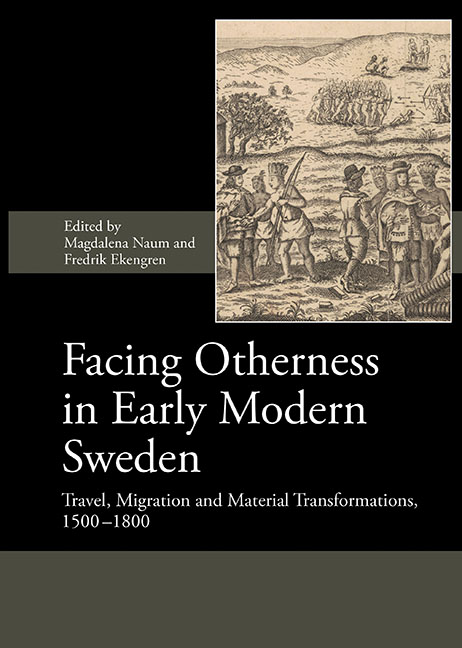Book contents
- Frontmatter
- Contents
- List of Illustrations
- List of Contributors
- Preface
- List of Abbreviations
- I Material Transformations
- II Migration and Neighbourly Interactions
- III Overseas Travel
- Introduction
- 13 “How It Would Be to Walk On the New World with Feet from the Old”: Facing Otherness in Colonial America
- 14 Inscribing Indigeneity in the Colonial Landscape of New Sweden, 1638–1655
- 15 Men You Can Trust? Intercultural Trust and Masculinity in the Eyes of Swedes in 18th-Century Canton
- 16 The Barbary Coast and Ottoman Slavery in the Swedish Early Modern Imagination
- 17 A World of Distinctions: Pehr Löfling and the Meaning of Difference
- IV Conclusions
- Index
16 - The Barbary Coast and Ottoman Slavery in the Swedish Early Modern Imagination
from III - Overseas Travel
Published online by Cambridge University Press: 23 July 2019
- Frontmatter
- Contents
- List of Illustrations
- List of Contributors
- Preface
- List of Abbreviations
- I Material Transformations
- II Migration and Neighbourly Interactions
- III Overseas Travel
- Introduction
- 13 “How It Would Be to Walk On the New World with Feet from the Old”: Facing Otherness in Colonial America
- 14 Inscribing Indigeneity in the Colonial Landscape of New Sweden, 1638–1655
- 15 Men You Can Trust? Intercultural Trust and Masculinity in the Eyes of Swedes in 18th-Century Canton
- 16 The Barbary Coast and Ottoman Slavery in the Swedish Early Modern Imagination
- 17 A World of Distinctions: Pehr Löfling and the Meaning of Difference
- IV Conclusions
- Index
Summary
Between 1650 and 1770 around 1,000 Swedish subjects involved in long-distance trade in the Mediterranean were captured by Muslim corsairs operating from North Africa. European–North African conflicts were commented on in Swedish newspapers, associated with alms collections for ransom and noted in academic literature. This chapter analyses attitudes towards the Barbary Coast and towards Ottoman slavery in different genres. It argues that information on North Africa was widespread in early modern Sweden and that the discourse on North Africa and Ottoman slavery was multi-faceted, both confirming and challenging European stereotypes of the “Orient”.
Throughout the 17th and until the beginning of the 19th century, Sweden's most controversial contact with Islamic cultures was with the so-called Barbary powers: Tripoli, Tunis and Algiers, all regencies of the Ottoman Empire and Morocco. Between 1650 and 1770 approximately 1,000 Swedish subjects were captured by corsairs roaming the waters of the Mediterranean and the Atlantic. The large majority of the captives were civilians serving in the merchant fleet, and many of them ended up on slave markets in North Africa. Captivity in North Africa could mean a life spent chained to an oar, working in harbours, in private households or as servants in palaces. Compared to other Europeans, Swedish subjects represented only a small fraction of those held in North African captivity. The majority of captives were Spanish, but there were also French, Dutch, German, Portuguese and other Scandinavians. Approximately half of the captured Swedes made it back home. Captivity and potential death for those working in the merchant fleet was the price of the state enterprise to import salt directly from southern Europe – a commodity of vital importance for preserving food during the winter in Sweden.
The Ottoman Empire had long been “the Other” in the eyes of Europe, and vice versa. But between the two there was also a fascinating exchange of ideas and commodities, and personal encounters between individuals such as merchants, travellers, diplomats, consuls, soldiers and captives. Those who returned could tell stories about the other, narratives that often blended fact and fiction and fed the European imagination of “the Turk” and slavery on the Barbary Coast, as will be discussed in this chapter.
- Type
- Chapter
- Information
- Facing Otherness in Early Modern SwedenTravel, Migration and Material Transformations 1500–1800, pp. 307 - 326Publisher: Boydell & BrewerPrint publication year: 2018



